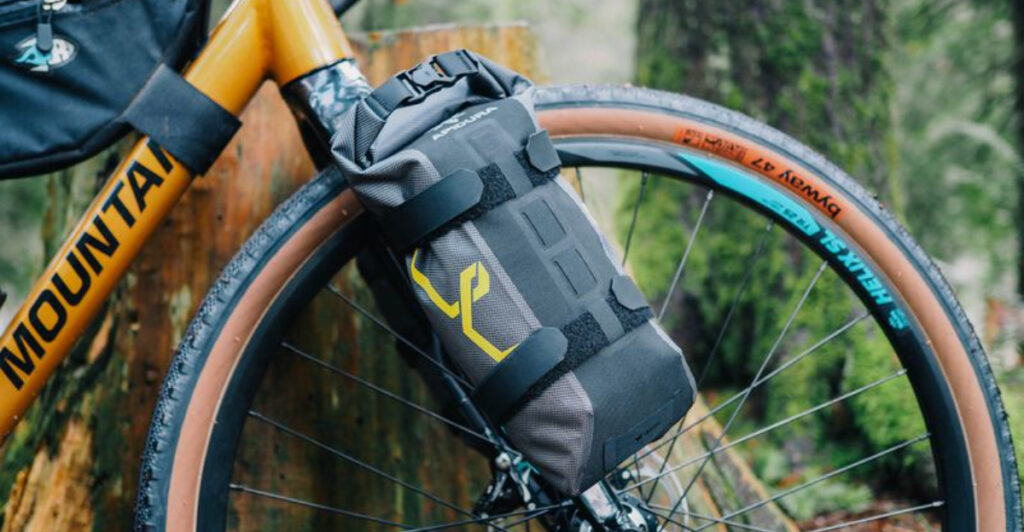Planning a bikepacking adventure means choosing the right bags to carry your gear without weighing you down. Smart bag selection can make the difference between a smooth journey and a struggle with heavy, unbalanced equipment. The key is finding lightweight options that maximize storage while keeping your bike stable and easy to handle.
1. Frame Bags – Maximum Storage Without Bulky Weight
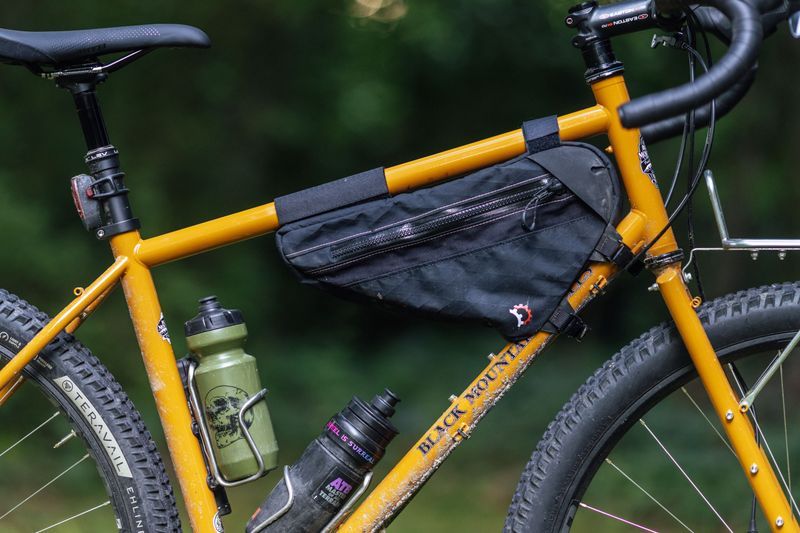
Frame bags transform your bike’s main triangle into prime real estate for heavy essentials. These bags sit snugly inside your frame, keeping weight centered and low for better bike handling. You’ll barely notice the difference in balance when climbing hills or navigating tight turns.
Pack your heaviest items here – tools, cooking gear, and food supplies work perfectly. The central location prevents that annoying sway you get with other bag types. Measure your frame carefully before buying, as brands like Revelate Designs and Apidura offer both universal and custom-fit options for optimal space usage.
2. Handlebar Bags – Perfect for Bulky but Light Gear
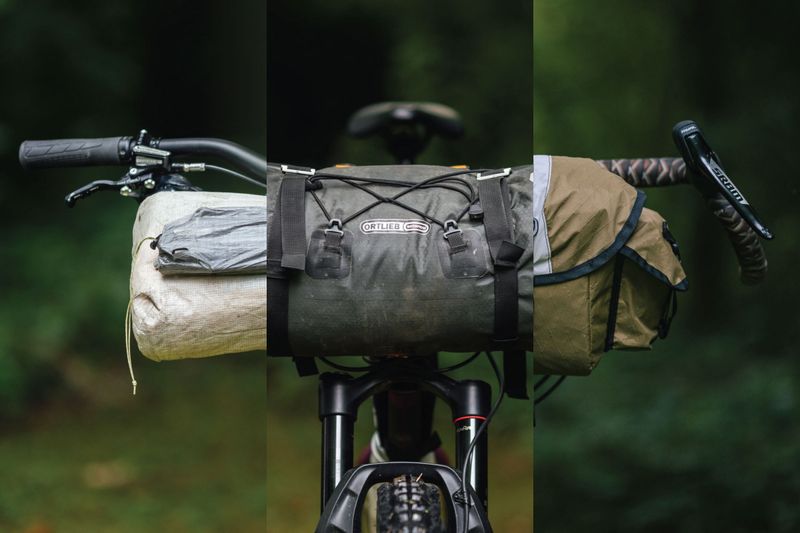
Cylindrical bags strapped across your handlebars excel at carrying bulky items that compress well. Sleeping bags, tents, and extra clothing fit perfectly without adding bulk to your frame. The front-loading position keeps weight distribution balanced with your rear storage.
Roll-top designs work best for maximum compression and weather protection. Use compression straps to keep everything tight and prevent the bag from shifting during rough terrain. Many experienced bikepackers swear by dry bag systems inside handlebar bags for extra waterproofing during unexpected weather changes.
3. Seat Packs – The Classic Bikepacking Look
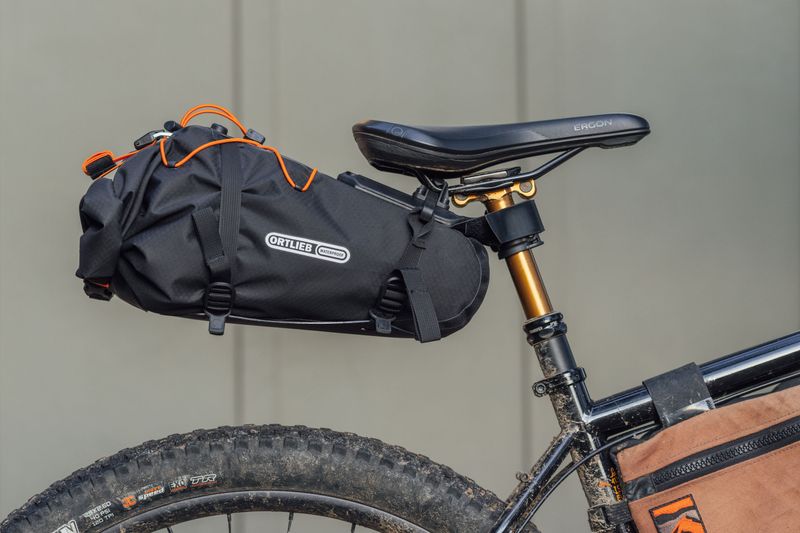
That distinctive tapered bag hanging beneath your saddle defines the bikepacking aesthetic for good reason. Seat packs hold surprising amounts of gear without requiring a rear rack, keeping your bike’s clean lines intact. They’re perfect for clothing and lightweight items you won’t need during the ride.
Pack soft items to minimize sway on rough terrain – nothing ruins a ride like a swinging bag throwing off your balance. Many riders add stabilizer straps for technical sections. The key is loading heavier items closer to the seat post and lighter gear toward the tail for optimal weight distribution.
4. Top Tube Bags – Snacks and Small Essentials Within Reach
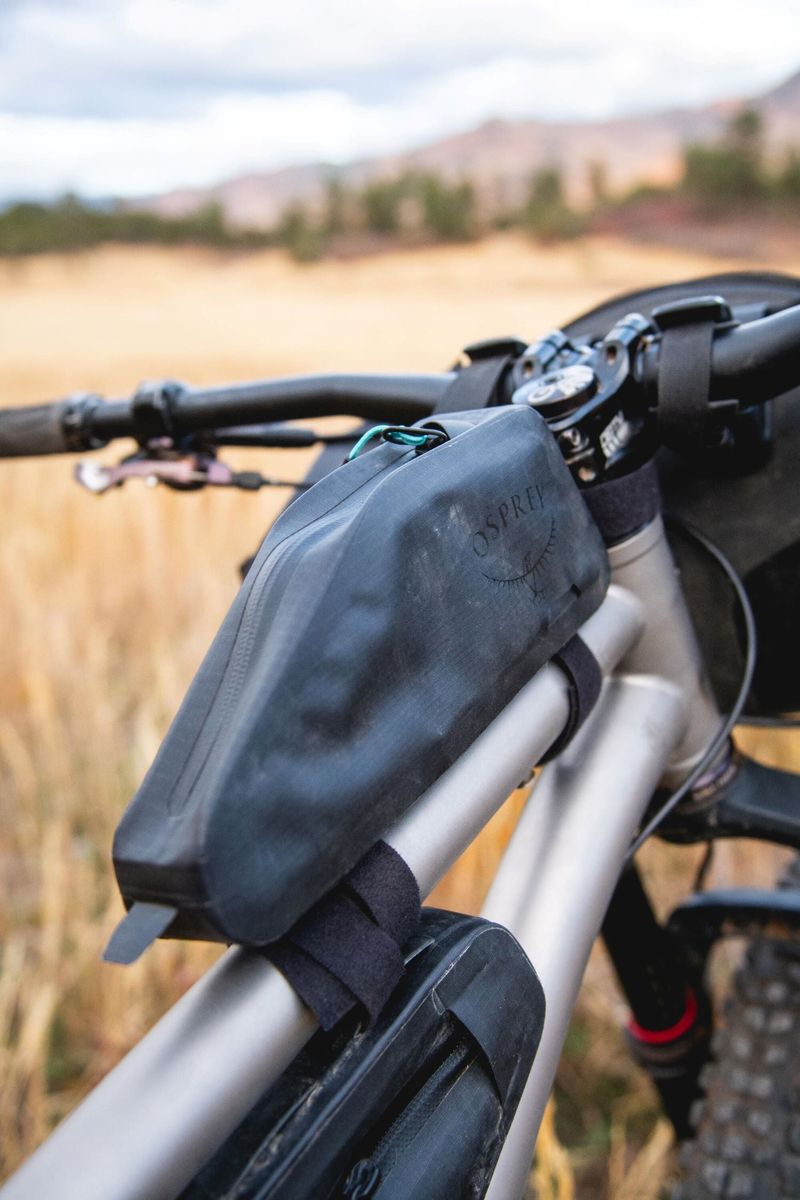
Small pouches sitting on your bike’s top tube become your mobile snack bar and electronics station. Energy bars, phone, wallet, or GPS battery packs stay perfectly accessible without stopping. The position lets you grab what you need while still pedaling.
Many cyclists run two top tube bags – one behind the stem and another near the seat post – for extra organization. Quick-access zippers are essential for one-handed operation during rides. Choose bags with secure closures to prevent losing items on bumpy trails, and consider waterproof options for electronics protection during unexpected rain.
5. Stem Bags – Easy Access Feed Pouches
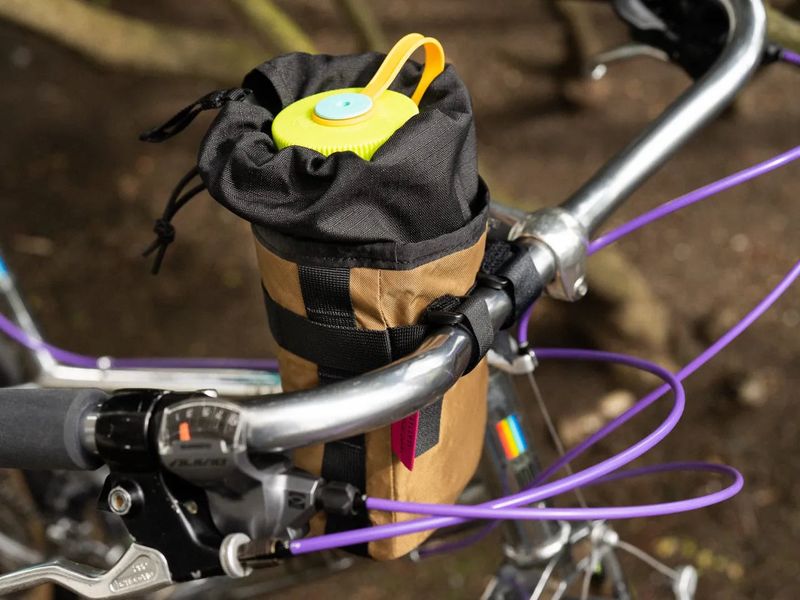
Nicknamed “feed bags” by the bikepacking community, these small cylindrical bags attach to your handlebars and stem for ultimate convenience. Water bottles, energy snacks, or even a small camera stay within arm’s reach. The design mimics what pro cyclists use during races.
Many stem bags open and close one-handed while riding – a game-changer during long climbs when you need fuel but don’t want to lose momentum. The compact size prevents interference with steering while providing just enough space for ride essentials. Perfect for staying fueled without constant stops.
6. Fork Bags – Extra Capacity for Longer Trips
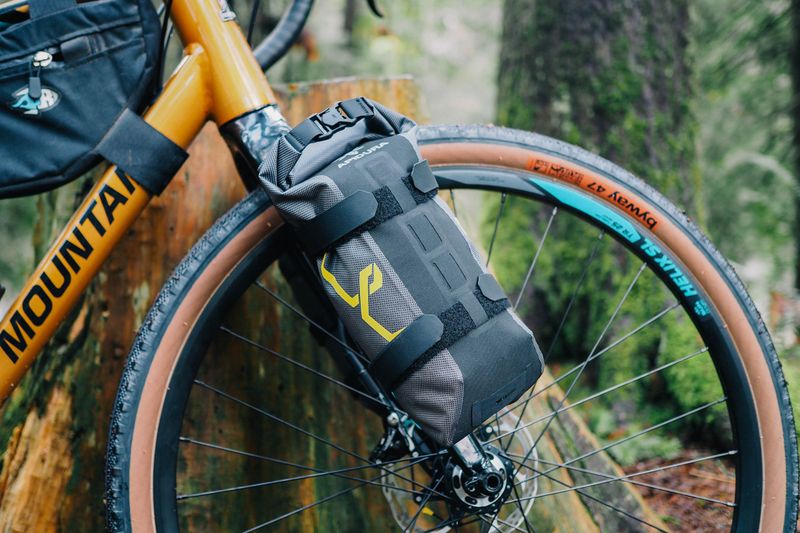
Small roll-top dry bags mounted on your fork add significant carrying space without requiring racks. They’re perfect for sleeping pads, cookware, or extra food supplies on multi-day adventures. The low, forward position maintains excellent bike handling characteristics.
Keep weight balanced with one bag per fork leg – uneven loading affects steering control, especially during technical descents. Cage mounts work better than strap systems for reliability on rough terrain. Many riders use these bags for items they’ll need at camp but not during the ride, like cooking gear or extra layers for cold nights.
7. Accessory Pouches – Organize the Little Things
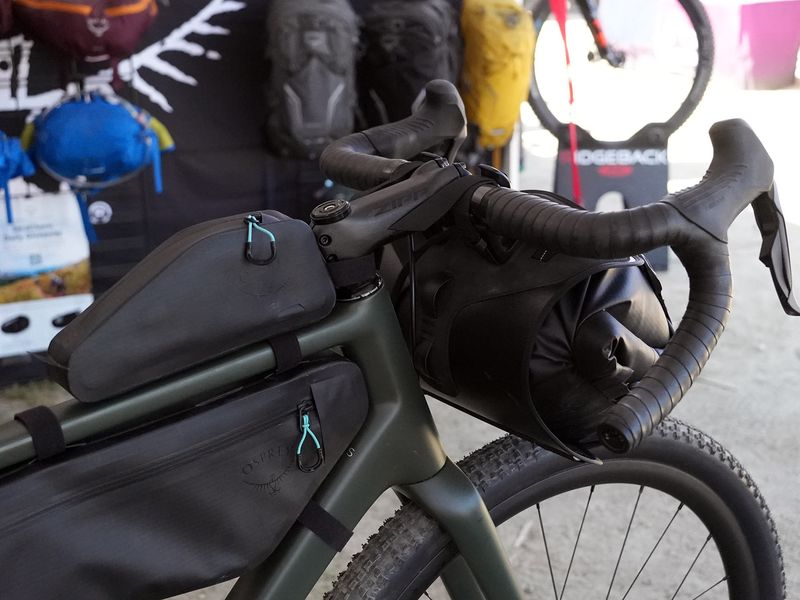
Add-on bags that clip to your existing handlebar or seat packs solve the small-item organization puzzle. Chargers, first-aid kits, toiletries, and repair tools stay tidy and separate from your main gear. No more digging through everything to find your phone cable.
Modular systems let you customize storage based on trip length and needs. Quick-release clips make setup and breakdown effortless at campsites. Many accessory pouches feature internal organization pockets and mesh sections for sorting tiny essentials. Smart organization prevents the frustrating gear shuffle that wastes time and tests patience during multi-day adventures.

